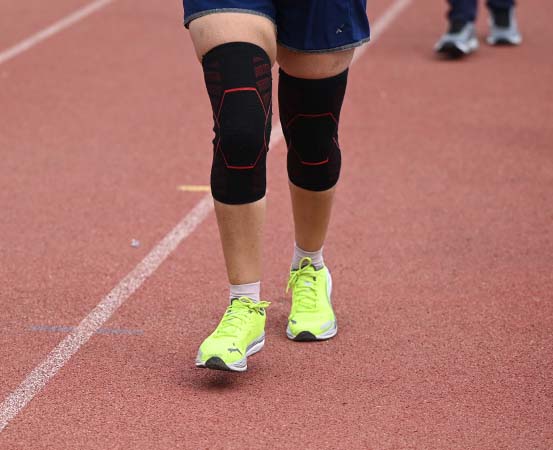
Running is one of the most natural forms of exercise. However, more often than not, many start their running journey with little thought put into the only equipment they need — the shoes. Initially, in the first week or so, running in any shoe may not create an issue or pose difficulty. However, as your distance and pace increase over time, you may face discomfort and even injuries. Selecting a suitable pair of shoes, taking into account your foot structure and the running surface, among other factors, is important to ensure better performance as well as a pain- and injury-free running experience.
Factors to consider while choosing running shoes
♦ Foot structure
Each individual has a unique foot structure, which is broadly divided into three types: pronated, supinated and neutral. It’s the primary factor that needs to be considered while choosing running shoes, as it has an impact on one’s gait (the pattern in which the limbs move when a person walks or runs). Buying running shoes based on your foot structure can help you avoid injuries and discomfort since your foot anatomy and gait dictate the distribution of weight and forces while you walk or run.
Bengaluru-based IT professional and veteran marathoner Asif Ahmed was not very aware of this aspect when he started running, which resulted in many injuries. “I’m a flat-footed person who lacks proper foot roll [the natural inward rolling motion],” says Ahmed. “I need more space within the shoes while running. I have experienced injuries during long runs from wearing uncomfortable shoes that are not designed for my foot structure.”
According to him, the first step before selecting a running shoe is to conduct a gait analysis to determine your foot structure. Most shoe showrooms nowadays have gait analysis technology.
♦ Foot width
When selecting running shoes, it is important to take your foot width into consideration. If you do not wear shoes that fit properly, your feet get constricted. Running shoe manufacturers provide precise width dimensions for various models to make the selection process easier.
Anupam Gupta, a seasoned marathon runner from Greater Noida, suggests people with wider feet buy shoes with a wider toe box; the toe box refers to the front portion of the shoe that surrounds and shields the toes.
“As you run, your toes tend to stretch and your feet automatically expand,” says Gupta. “If you have broad feet, you will feel uncomfortable and may hurt yourself by running in shoes without a wide toe box.”
♦ Shoe size
Selecting the right shoes according to the standard size metrics can be difficult since the numbers vary for different brands.
“My foot size is 23.5 cm. While it translates to UK 9 for a well-known brand, it is UK 8.5 for another,” says Ahmed. “The most common error people make is going by US and UK standards. Always remember your foot size in centimeters. Every brand offers a size chart to assist you in selecting the appropriate size based on the circumference of your foot in centimeters.”
♦ Shoe weight
Experts recommend choosing lightweight running shoes over heavy ones as they increase energy expenditure, impede agility, strain the muscles and compromise performance.
“I would suggest shoes weighing around 250 grams for running efficiency,” says Gupta. “Avoid shoes weighing 300 grams or more, as they will exhaust you. Such shoes should only be selected if there’s a specific reason, such as providing arch support for your distinct foot structure. If you have a neutral foot, try to get shoes that are as light as possible.”
♦ Running surface
Picking shoes based on your requirements is easy because there are shoes made specifically for diverse types of running terrain. That being said, you cannot wear the same shoes for different types of terrain.
“For instance, you cannot use long-distance running shoes for sprinting or road running shoes for trail running. Every shoe design is unique,” says Ahmed. “Sprinters run on the tracks, and such shoes come with embedded spikes. You cannot use them on the road.”
Another important aspect that many ignore is replacing used or worn-out shoes at the right time. However, Ahmed believes there is no hard-and-fast rule that requires you to throw away the shoes after covering a specific distance. “Most brands advise replacing your shoes every 700–800 kilometers,” explains Ahmed. “My experience taught me that you can continue using the shoes if you believe they provide adequate cushioning and comfort after covering 800 kilometers. On average, I discard my shoes after 1,000 kilometers, as I notice their deterioration only after covering that distance.”

















